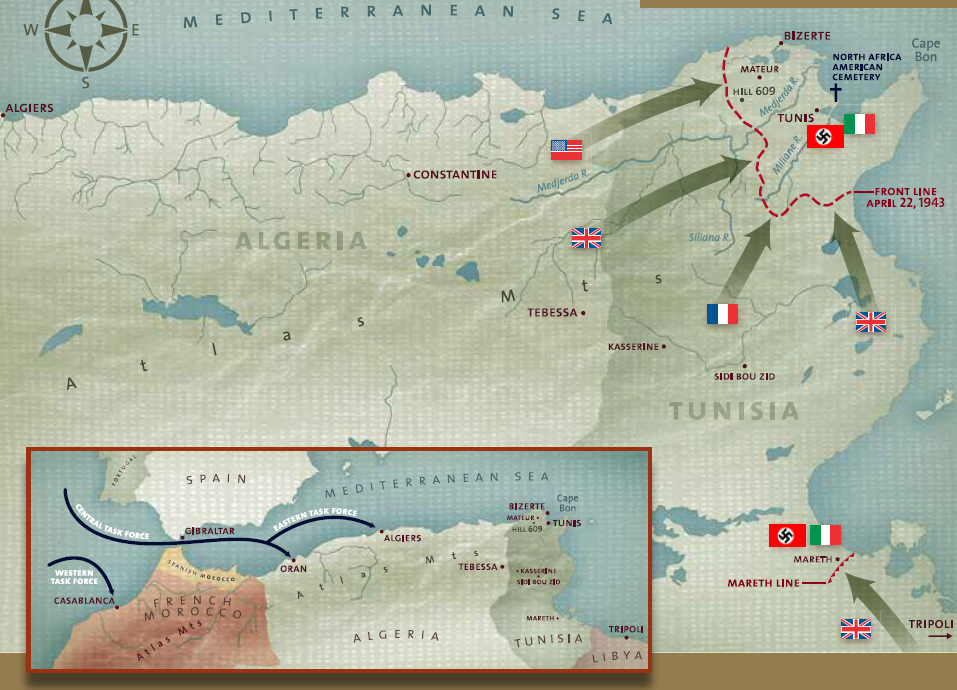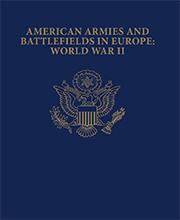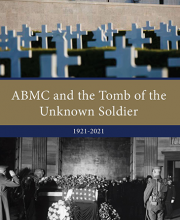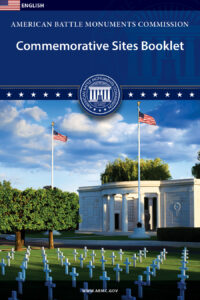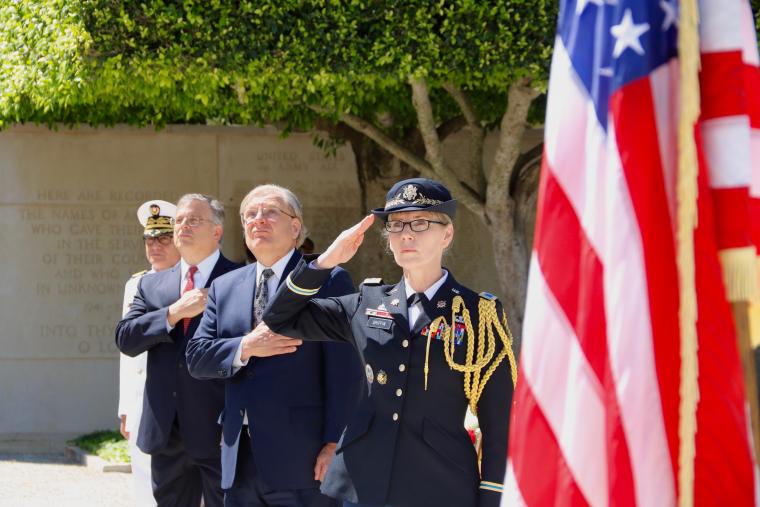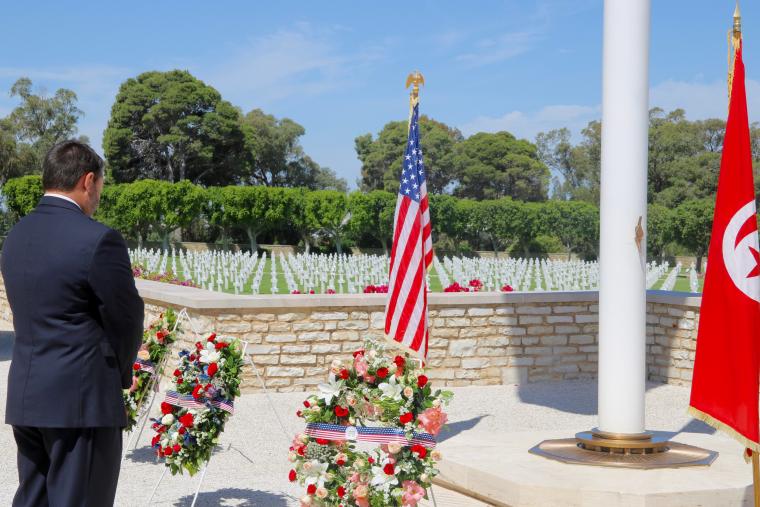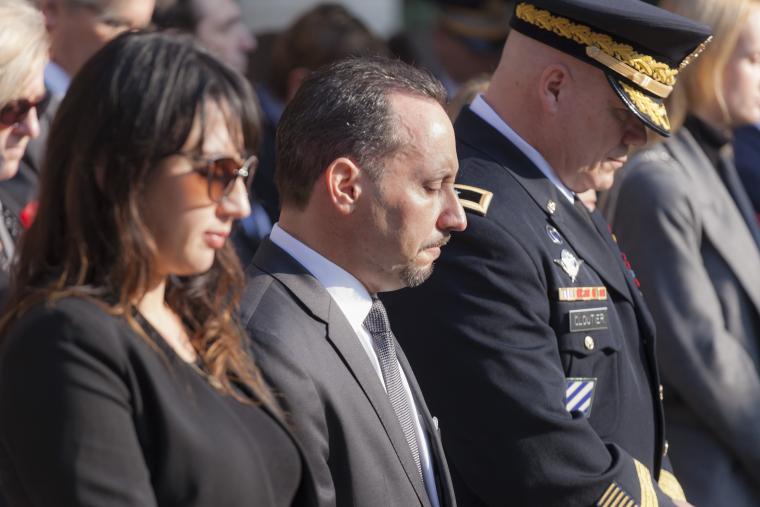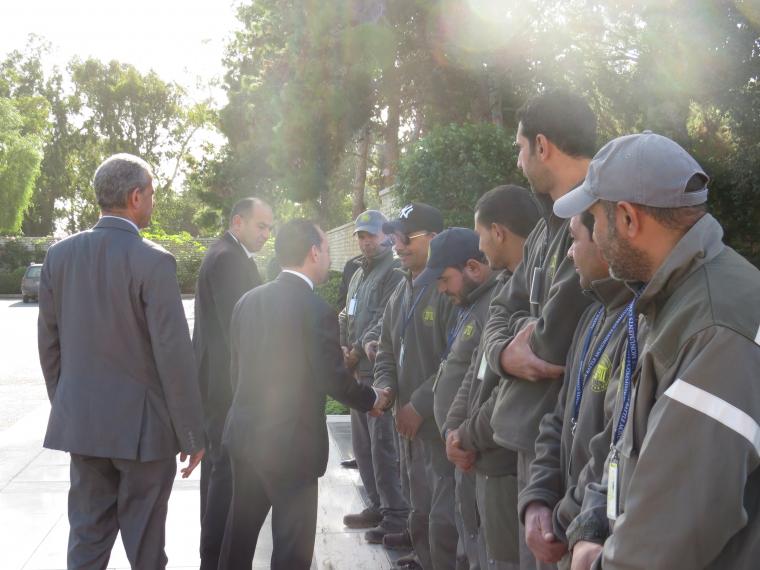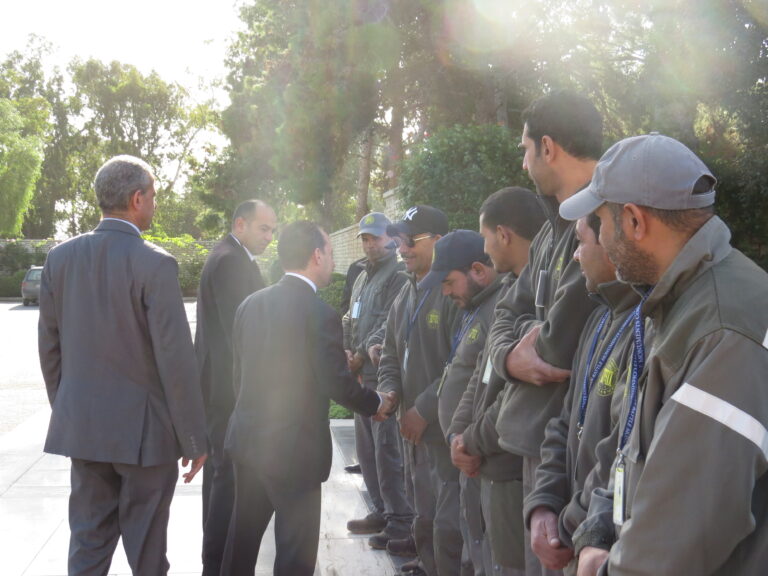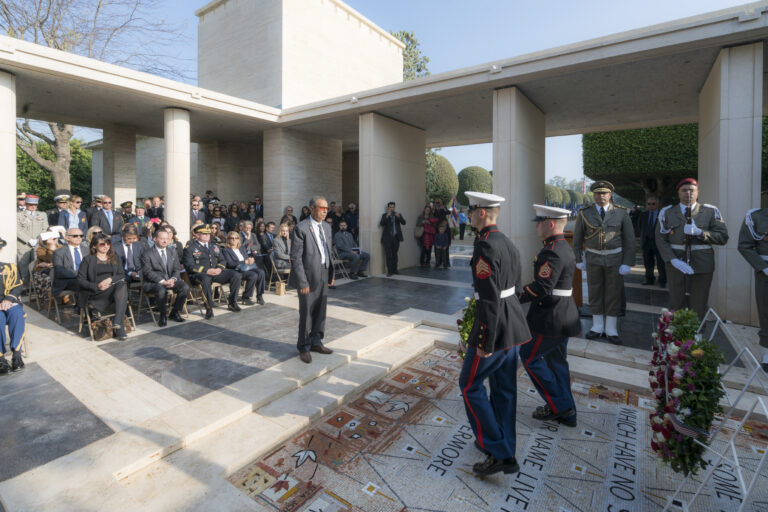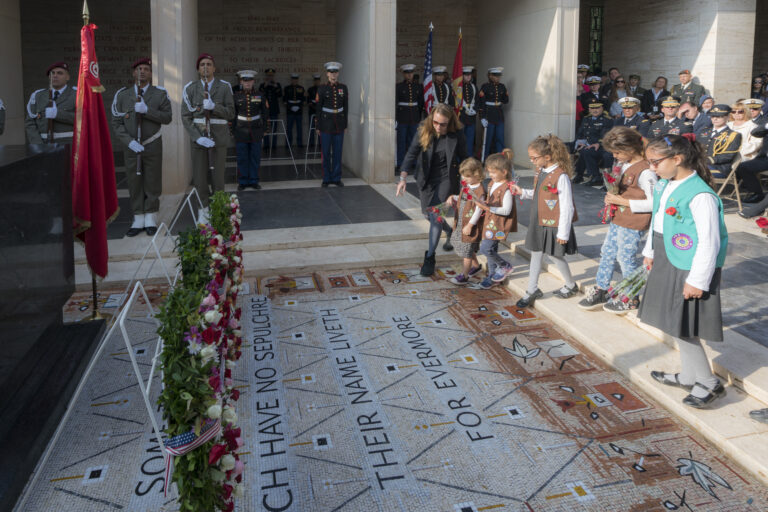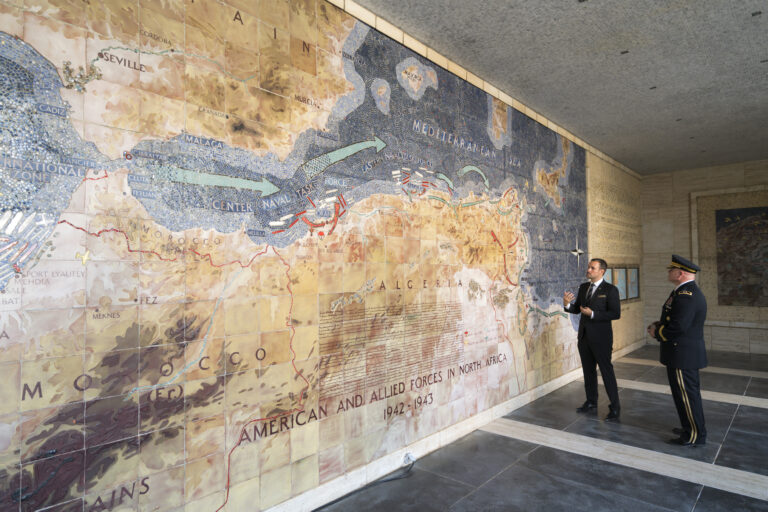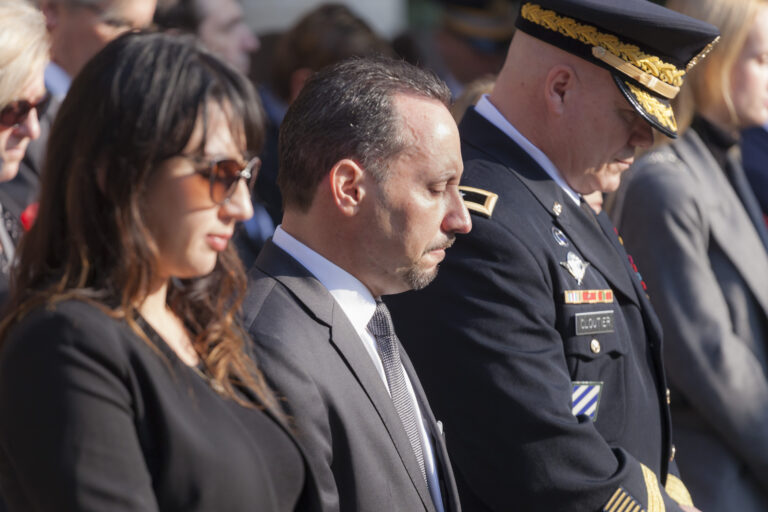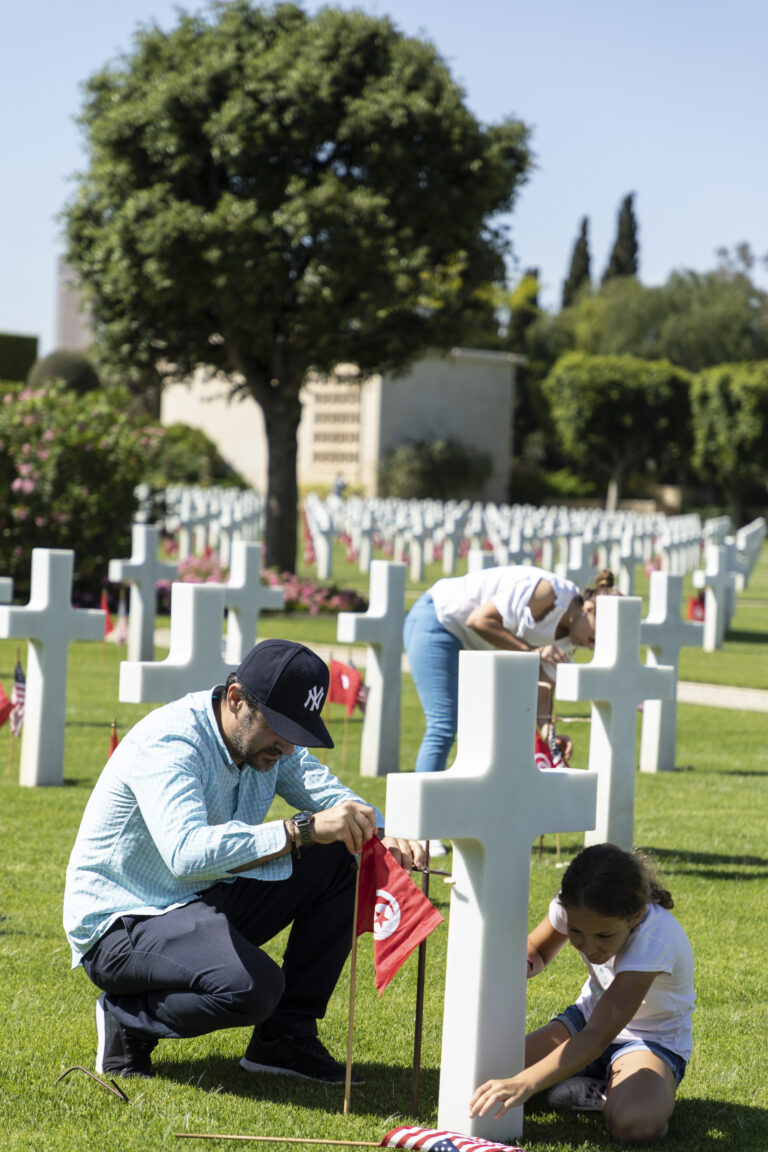At the 27-acre North Africa American Cemetery and Memorial in Tunisia rest 2,841 of our military dead, their headstones set in straight lines subdivided into nine rectangular plots by wide paths, with decorative pools at their intersections.
Along the southeast edge of the burial area, bordering the tree-lined terrace leading to the memorial is the Wall of the Missing. On this wall 3,724 names are engraved. Rosettes mark the names of those since recovered and identified. Most honored here lost their lives in World War II in military activities ranging from North Africa to the Persian Gulf.
The chapel and the memorial court, which contain large maps in mosaic and ceramic depicting the operations and supply activities of American forces across Africa to the Persian Gulf, were designed to harmonize with local architecture. The chapel interior is decorated with polished marble, flags and sculpture.
Street Address:553 Rue Roosevelt, 2016 Carthage, Tunisia North Africa American Cemetery is located in close proximity to the site of the ancient city of Carthage, Tunisia, destroyed by the Romans in 146 B.C., and lies over part of the site of Roman Carthage. It is near the present town of the same name, 10 miles from the city of Tunis and five miles from its airport.
 An official website of the United States government. Here's how you know.
An official website of the United States government. Here's how you know. 
